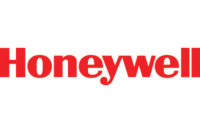From the NIOSH Director's desk
My Safe Summer Job – It takes teamwork
What was your first summer job?

Mine was painting fences in my neighborhood. I combined my love of the outdoors with earning money! One homeowner paid me in silver dollars that he had won in Las Vegas.
Whether painting fences, working in the family business, or working in a local shop, restaurant, or office, summer jobs provide valuable opportunities for young people so they can earn money, gain independence, build self-esteem, and explore vocational interests. They can also acquire valuable social and emotional learning skills, such as teamwork and critical thinking, which help them transition to adulthood. Many young people are seizing these opportunities: a recent GAO report estimates that in 2017, 2.5 million adolescents 15–17 years old worked during the summer months (June through August). [1]
Despite these benefits, work can also have serious risks. A NIOSH analysis of nonfatal occupational injury data reveal that, in 2017, the rate of work-related injuries treated in hospital emergency departments for workers 15–17 years old was estimated to be more than one-and-a-half times higher than the injury rate for adult workers 25 years and older. [2]
A 2017 NIOSH report paints a troubling picture of the enduring problem of young worker injuries and deaths in the United States, especially in high-hazard industries such as agriculture. Conditions such as workplace hazards, child labor law violations, [3] fast-paced work, minority status, and insufficient experience, training, and supervision contribute to an increased risk of injury and death among adolescent workers.
While employers have the main responsibility to provide workers, including teen employees, with a safe and healthy workplace, safety takes teamwork. Parents, teachers, government agencies, and young people themselves also play a crucial role in contributing to safe and healthy work experiences for youth. A recent NIOSH blog provides general guidelines, complied from a number of sources, for keeping youth safe and healthy at work.
NIOSH understands and appreciates the importance of being part of the team promoting young worker safety and health. That’s why we joined up with the Occupational Safety and Health Administration, CareerSafe, the National Safety Council, the American Industrial Hygiene Association, the Board of Certified Safety Professionals, and other professional and nonprofit organizations on #MySafeSummerJob. This 5-week, social media campaign was designed to disseminate information about workplace safety and health to young workers, parents, and employers as high school and college youth begin their summer employment.
Media messaging was based on the NIOSH Youth@Work—Talking Safetycurriculum and other sources to raise awareness about job-related hazards and how to address them, workers’ rights, and how to speak up when feeling unsafe or threatened at work. Stakeholders were encouraged to follow along on the NIOSH Facebook, Instagram, and Twitter accounts, and to visit the My Safe Summer Jobexternal icon website for materials, resources, and information. CDC also highlighted the campaign in a May press release, Eight Tips for Safe and Healthy Summertime Work and Play. Preliminary reports and social media metrics indicate that the campaign was a success and had a substantial reach. The CDC press release alone (that raised awareness about #MySafeSummerJob) had a potential audience of 108 million readers! The campaign was included in communications from major media outletsexternal icon and generated positive buzz in the occupational safety and health community and beyond.
The My Safe Summer Jobexternal icon campaign is an exceptional example of teamwork to promote young worker safety and health. It is only one of the many collaborations in which NIOSH is engaged on this important public health topic. The NIOSH Safe-Skilled-Ready Workforce program and Young Worker Safety and Health webpage have more information on these collaborations, as well as access to young worker research and resources. Also provided there are links to other federal agencies such as the Occupational Safety and Health Administrationexternal icon, the U.S. Department of Labor Wage and Hour Divisionexternal icon, and multiple state agencies and community organizations that provide guidance for young workers, employers, parents, and teachers.
It’s summertime! A perfect time for picnics, painting fences, and redoubling our efforts to work together to ensure that every young person’s first summer job—and every job—is safe and healthy.
References
[1] United States Government Accountability Office. Working children: Federal inquiry data and compliance strategies could be strengthened. https://www.gao.gov/products/GAO-19-26external icon. Publicly Released: Dec 3, 2018. Accessed May 9, 2019.
[2] NIOSH. Work-Related Injury Statistics Query System [Internet]. Morgantown (WV): Centers for Disease Control and Prevention, National Institute for Occupational Safety and Health (US). May 2019. Available from: http://wwwn.cdc.gov/wisards/workrisqs.
[3] Information on the Fair Labor Standards Act of 1938 (FLSA) child labor provisions is available from: https://www.dol.gov/whd/regs/compliance/hrg.htm#9external icon.
Looking for a reprint of this article?
From high-res PDFs to custom plaques, order your copy today!




